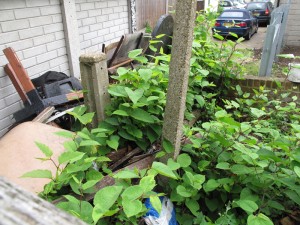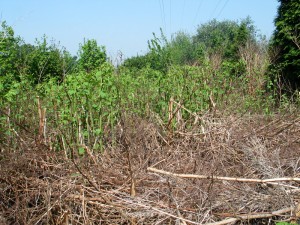knotweed advice
Japanese knotweed treatment: tips and advice for developers and land agents
Survey the site for Japanese knotweed before purchase
 If knotweed is present, it should not stop you buying the site. However, you should employ a consultant to advise how profitable the development will be after taking control costs into account.
If knotweed is present, it should not stop you buying the site. However, you should employ a consultant to advise how profitable the development will be after taking control costs into account.- Has the site been skimmed or treated? Look for evidence of knotweed material (may not be evident during the winter months.) Consider some form of legal protection from the potential subsequent cost of Japanese knotweed treatment within the purchase agreement
- If there is knotweed, we will advise the best methods for your site to use.
Timetable for Japanese knotweed treatment
- Plan to minimise the amount of Japanese knotweed that you have to excavate
- Allocate sufficient time within the project timescale to develop and apply a Japanese knotweed removal management plan
- Japanese knotweed treatment should be done as early and effectively as possible. This significantly cuts the chance of it growing again.
- Consider a phased development to allow more time for treatment.
- Use the best treatment methods, including the most effective herbicides. These will be determined by factors such as how close the site is to water, desirable trees and other vegetation.
Long term management
- Consider the chance that Japanese knotweed could grow back when you are managing the site long-term
-
Current site owners must accurately record within the property deeds where any material is buried and make this available to all subsequent owners so that the material is not disturbed.

Inappropriate chemical treatment by others
- A summary of the treatment should be included within the vendor statement declaration.
Be wary of products and methods that claim to quickly eradicate Japanese knotweed and guarantees that it will not appear again on the site. A BASIS-registered person should advise on all chemical treatment.
References: The Environment Agency


